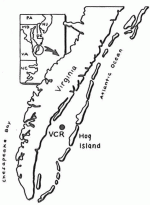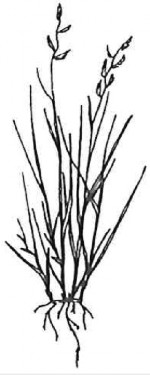A tribute to the late Virginia Coast Reserve LTER principal investigator
Bill Odum had his softball shirt retired to the wall of the College Inn in Charlottesville, Virginia, his favorite eatery. Visitors to the Inn bask in the ambiance of the “Beagles,” Darwin’s Beagles, emblazoned on his shirt. Bill never made Charlottesville’s all-star softball team, but there are lots of reasons to have your shirt retired.
While many of us split off and study, Bill lumped together and synthesized. Wetlands were his special thing. His spectrum ran from tidal hypersaline to non-tidal freshwater marshes. He viewed microtopography and water-table levels, fluctuations and disturbances as critical to understanding wetlands ecology. He was convinced that a wetlands ecologist just had to know near-surface, groundwater hydrology. He learned it. He worked hard to draw in a wetlands hydrologist to our Department and to the Virginia Coast Reserve (VCR) team. Bill was also convinced that fresh rainwater input to the marsh surface resulted in lowered salinity and a primary productivity boost. He thought it would help to know about and be able to predict the weather. He learned how and rose to the top in our weather forecasting contests. He was always the student.
Bill gave his research interests as follows: “Understanding the interplay between physical and biological factors in shaping community structure and ecosystem processes is the central theme of my research efforts. Most of my research is conducted in coastal environments which receive periodic physical stress (e.g., barrier island beaches, tidal marshes and mangrove swamps), Processes of interest include vascular plant production and decomposition, secondary production, and transport of dissolved and particulate organic matter between wetlands and nearby bodies of water. Aspects of community structure which are included in these studies include plant and animal distributions, habitat partitioning, and interactions. The most recent project involves a comparison of these factors in a salt marsh and a tidal freshwater marsh.”
In the months before his death Bill and his LTER colleagues were working on the nature of state changes in ecosystems. At the VCR, major wetland state changes have taken place during the last few decades. An extensive tract of farmland has become salt marsh; high marshes have become Salicornia hypersaline flats; extensive sea grass beds are now mudflats, and a 1930s Hog Island maritime pine forest is now grassland. Bill was convinced that the interplay of microtopography and air-water and fresh-salt water interfaces, under the influence of a background sea-level rise, results in binary ecosystem state change. At some critical point the maintaining of one type of ecosystem fails and an alternate form takes its place. He was also convinced that the actual point of state transition is usually determined by normal environmental disturbances. He viewed disturbance as the trigger in state change, not as its fundamental cause.
Most of the state changes at the VCR result from changes in topography, changes in sea level or changes in the level of the water table. Relative sea-level rise, currently on the order of 2 mm/yr, and microtopography changes in the range of centimeters give rise to ecosystem state changes. The idea that great ecosystem changes may come from small, persistent actions is like a paraphrase of Bill’s 1982 BioScience article “Environmental degradation and the tyranny of small decisions.” Near the end of his life, he came to understand that microphysical processes may be giants in ecosystem structuring.
Bill knew how to get things done in a mob of not-so-small-egoed colleagues. When he believed in something, he pressed you in an endless series of low-key, brief contacts, making a little progress here and a little there until he won. In a way, he was applying the “tyranny of small decisions.”We accused him of having a small attention span. In Madison Avenue parlance, he “mother-henned” everything. That included his graduate students and the LTER project. His B students were well-served. The VCR LTER was well-served. Leaders serve.

 Enlarge this image
Enlarge this image

